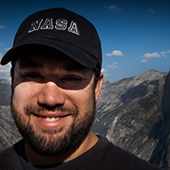Do Use Focus Groups Early to Identify Important Research Questions
Focus groups can be an effective way to get started on a project. When you are just starting to explore a product idea, getting a group of potential users together to discuss ideas can be extremely helpful. Focus groups can provide you with a cost-effective means of testing your team’s initial assumptions, beginning to identify relevant market segments, exploring product ideas, and acquiring the data you need to create a UX research plan to guide product development.
Don’t Try to Do Too Much with Your Findings from Focus Groups
The biggest mistake people make with focus groups is an overreliance on the findings in informing design decisions. Focus-group findings are subject to a variety of confounds, including the relatively low numbers of participants, participants’ speculation during the session, and the significant influence the opinions of others can have on participants in a focus group. For these reasons, researchers do not typically use focus groups in rigorous scientific research. Focus groups provide high-level feedback that helps you to make strategic decisions. When you are getting to the point where you have to make very specific, tactical design decisions, it is time to move on to more reliable research methods.
Do Recruit Participants from a Variety of Backgrounds
One of your goals in doing early, discovery research is to identify relevant market segments. One way of? doing this is to gather representatives of different market segments into a single focus group to determine how people in different segments respond to particular ideas. You might find that certain ideas resonate strongly with some participants, but don’t interest other participants at all. In this case, exploring the reasons for their different responses can help you to identify different products that might fit into a single product line.
For example, when examining eReaders, you might find that some participants want a very compact product, while others want a larger screen. By exploring further, you might find that participants who are interested in a compact product like to read novels and tend to travel a lot, so the small form factor supports their reading habits. On the other hand, the participants who want a larger screen might like to read newspapers and magazines at home or in their office. These different use cases could lead to different products, each of which is designed to support the reading habits of one of these two very different market segments.
Don’t Recruit Participants Who Are Too Similar or Too Different
It’s important that focus-group participants have something in common for you to get useful information about a topic you’re exploring. For example, if you are considering developing a photography product, you’ll likely want all participants to be interested in photography in some way. On the other hand, it’s important to ensure that participants aren’t too similar for you to acquire a variety of perspectives and foster discussion.
Continuing with the photography example, if you have photojournalists, wedding photographers, and amateur photographers in a session together, you might find that they have very different needs regarding a photography product, but you also might find that there are a couple of themes that are consistent across all groups.
When you uncover such differences, it’s important to explore the reasons why people’s needs are different. For example, while amateur photographers might be extremely interested in advanced photo-sharing capabilities, wedding photographers might not. By exploring further, you might determine that wedding photographers need to keep very tight control of their photos, or work product, so they need more security than amateurs do. You might not discover such needs if you didn’t have these different types of users in the room together, talking with each other about their commonalities and differences.
Do Include More Than Two People in a Focus-Group Session
Good focus groups should include a variety of perspectives and foster communication among people with slightly different backgrounds. In a good focus group, participants comment on what other participants say, either expanding on a topic or expressing a difference of opinion. If you do a focus group with just two people, you’ll tend to end up with something more like two separate interviews that you’ve conducted concurrently, because you’ll have a harder time establishing a discussion with a lively exchange of ideas.
Don’t Include More Than Six People in a Focus-Group Session
Acquiring thoughtful comments on several topics from multiple people can take quite a bit of time. The more participants you add, the more time a focus group takes. We usually find that extending a session beyond two hours causes participants to tire and pull back from the discussion. For this reason, it’s a good idea to limit sessions to only six participants. This also helps you to maintain control of a session as the discussion gathers energy.
Do Prepare a UX Research Plan
A good focus-group session flirts at the edge of chaos. When comments are flying around the room, it can be difficult to maintain a session’s focus and ensure that it covers all of your planned topics. When you’re putting together your UX research plan, begin with the business goals for your research, then identify the research goals that would support those business goals. You should be able to extract some specific research questions from your research goals, and these will be the main topics for your focus group to discuss. Make sure you work all of these topics into each session without disrupting the flow of the discussion.

